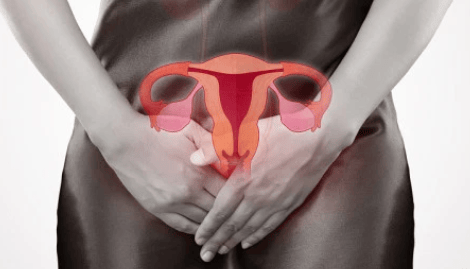Adenomyosis is a common gynecological disease characterized by the invasion of endometrial glandular tissue and stroma into the uterine muscle layer, forming diffuse or localized lesions. These displaced endometrial tissues will undergo normal activity with each menstrual cycle: thickening, breaking, and bleeding. This physiological change may cause symptoms such as uterine enlargement, menstrual pain, and excessive menstrual bleeding. This is why some women with adenomyosis may feel pain even without bleeding. So what exactly are the causes of adenomyosis and how should it be treated?
Reasons for pain in adenomyosis without bleeding
As mentioned earlier, the main reason why adenomyosis causes pain even without bleeding is the growth of endometrial tissue into the uterine muscle layer, leading to pain and bleeding. Although bleeding is a common symptom of adenomyosis, not all women with adenomyosis will experience bleeding. Many women with adenomyosis report feeling pain even without bleeding. And upon careful analysis, the main reasons why adenomyosis causes pain without bleeding are:
1. Normal endometrial tissue is expelled with menstrual blood after menstruation. However, for ectopic endometrial tissue in the uterine muscle wall, after local inflammation and absorption, it forms connective tissue that compresses surrounding nerves. Regardless of the menstrual cycle, as long as these ectopic endometrial tissues compress nerves, it may trigger severe pain.
2. During ovulation, the rapid increase in estrogen levels can exacerbate or stimulate the lesions in adenomyosis, leading to edema and subsequently causing abdominal pain. This pain does not come from menstrual bleeding but purely from the pathological changes of adenomyosis itself.
Four treatment methods for adenomyosis
Adenomyosis is a common form of endometriosis that greatly affects patients’ quality of life. Various treatment methods are used clinically depending on the specific conditions of different patients, including hormone therapy, traditional Chinese medicine treatment with Fuyan Pill, surgical treatment, and combination therapy.
1. For patients without symptoms or fertility needs, watchful waiting can be adopted, with regular follow-up and further treatment when necessary.
2. For young patients who wish to preserve uterine function, drug therapy can be used. This includes the use of oral contraceptives or levonorgestrel-releasing intrauterine system (commonly known as an intrauterine device). For those with significantly enlarged uterus or severe pain symptoms, gonadotropin-releasing hormone agonists can be used for 3-6 months before switching to oral contraceptives or levonorgestrel-releasing intrauterine system. It should be noted that there may be some adverse reactions at the beginning of treatment with the levonorgestrel-releasing intrauterine system, such as breakthrough bleeding or displacement, requiring enhanced follow-up.
3. For patients with severe conditions or those for whom conservative treatment is ineffective, surgical treatment can be chosen. Radical surgery includes total hysterectomy, suitable for cases without fertility needs, extensive lesions, or severe symptoms. Conservative surgery involves removing lesions of adenomyosis, suitable for young patients, with the need for careful assessment of lesion extent before surgery. To improve surgical outcomes, patients may use gonadotropin-releasing hormone agonists for pretreatment to reduce uterine volume and improve anemia.
4. For patients with both adenomyosis and infertility, active assisted reproductive technology treatment can be performed on the basis of drug therapy or conservative surgery. However, it is important to note the risk of uterine rupture after conservative surgery during pregnancy.
In general, in recent years, the incidence of adenomyosis has been gradually increasing, and treatment methods have become more diversified. For patients with fertility needs and adenomyosis, when choosing conservative treatments such as lesion removal surgery or electrocoagulation, the severity of the condition must be carefully evaluated, weighing the pros and cons of various treatment options. Clinical doctors should provide personalized treatment recommendations based on the specific conditions of patients, to maximize meeting their fertility needs while effectively relieving symptoms. Only through comprehensive consideration can feasible treatment plans be developed for patients with adenomyosis.


